(2 pm. – promoted by ek hornbeck)
I have recently been thinking a lot about building a feminist movement irrespective of our differences of analysis and experiences of oppression and exploitation. As I often do when looking for assistance, I turned to those that have experience and a wealth of information hoping to learn from them. This time, I turned to Bell Hooks (Feminist Theory: from Margin to Center), for inspiration and she provided so many brilliant insights, that I am going to reference some of her many ideas throughout this piece.
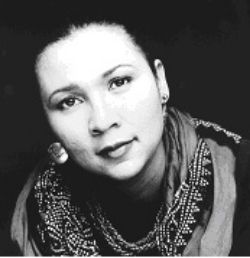
Feminism is often defined as a movement and an analysis that maintains that women must have equality in the economic, social, cultural and political spheres. It has never really been a singular movement; it is more correctly defined as a collection of movements trying to achieve the aims of equality for women in various spheres. The need for this movement derives from the clear inequality that women face on a daily level whether in the home, at work, in ability to access things from the most basic fundamental right of controlling one’s own body to accessing the same work at the same pay as men, from equal and shared responsibility for household labour and raising children to accessing the political sphere on an equal level to men.
That however only addresses part of the issue, as inequality with men in political, social, economic and cultural sphere is only part of the problem. If we are looking for a definition of feminism, I would actually go for a broader definition; we need a movement that addresses women’s oppression. In order to address that, it is not merely inequality that is the problem that feminists must address; rather it is the nature itself of women’s oppression and how to eradicate that oppression.

While there are certainly disagreements among feminists on their understanding of the causes of women’s oppression and how to address it, there is no question that we agree on the fundamental idea that in a world rife with inequality, women still face oppressions that are specific to their sex and/or gender. The understanding of women’s oppression is further complicated by the fact that women’s oppression affects women differently due to different class backgrounds, their different experiences of racism, access to wealth and political power. The aims of the different strands of the movement and their understanding of women’s oppression reflect those differences.
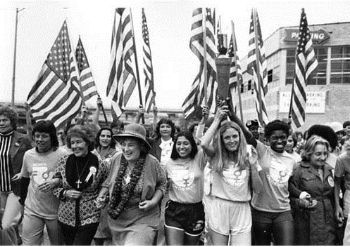
On some issues, clearly we can agree and fight together to obtain reforms. On others, our different histories, classes and experiences produce different needs and hence require different solutions and coming together cannot happen.
Finding commonality to build a broad movement
“Women’s legacy of women-hating, which includes fierce, brutal, verbal tearing apart of one another, has to be eliminated if women are to make critiques and engage in disagreement and arguments that are constructive and caring, with the intention of enriching rather than diminishing. Women-to-women negative, aggressive behavior is not unlearned when all critical judgment is suspended. It is unlearned when women accept that we are different, that we will necessarily disagree, but that we can disagree and argue with one another without acting as if we are fighting for our lives, without feeling that we stand to lose all self-esteem by verbally trashing someone else. Verbal disagreements are often the setting where women can demonstrate their engagement with the win-or-lose competitiveness that is most often associated with male interaction, especially in the arena of sports. Women, like men, must learn how to dialogue with one another without competition. […] (Hooks, p. 65)”
There have always been differences in the movement; that has always been the case from the beginnings: liberal feminists and socialist feminists disagreed about what the problems were and how to eliminate them. Radical feminists disagreed with liberal feminists and socialist feminists on how to understand and address our oppression.
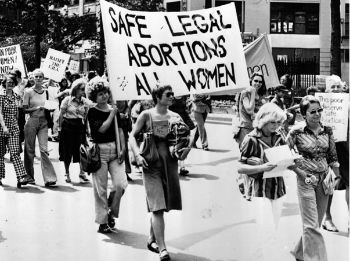
One problem that I would say exists in the movement is the way we disagree with each other; disagreement does not necessary mean total rejection, it means that we disagree due to different analyses, different histories and experiences and different solutions to an issue. Given disagreements, how can we build a movement on which we can unite on issues and points of struggle?
For an example, a few years ago, Geminijen and I were attempting to put together a series of women’s dialogues here on dkos. In the context of a discussion on comparative worth, recognising that there are still segregated labour markets for women, I advocated an argument that came from feminist discussions in the 1970s; I argued that equal pay for equal work was insufficient due to segregated labour markets and argued that equal pay for comparable work should still be a slogan. Essentially this argument says that the labour that women do in different (and lower paying jobs) but using the same skills as men should be paid equally. I was told I was trying to prioritise women’s labour and got called a hairy second waver. Quite honestly, while I do not consider that an insult; it was meant as such. Rather than attack the fact of segregated labour markets, I faced what that person considered to be an insult (and what I saw as an ad hominem attack. This is not political debate, this is not a coherent way to disagree and when I faced further attack (the person mistook me for a radical feminist), the discussion degenerated further on somehow ended up with a discussion of my supposed hostility to pornography; while I dislike the objectification of women, I was never a campaigner on this issue (and I would never crawl into bed with right-wing Christians to oppose it). The hostility and negative form of discussion led to our abandonment of the project. We were frankly baffled.
We need also to be aware of how we are explaining things and those words we are choosing to express ourselves. Many women have been fighting for a long time and we are arguing positions that we think we have worked out over time. However, we may be out of touch with the perceived needs of younger women who grew up at a different time and have different perceptions about their own oppression and the oppression of women. Some women working in the movement or that have been at the forefront of struggles in the 1970s hold controversial positions on some issues; we need to think whether these issues make unity impossible, whether we undertake discussion, or rather to find some issues that we can unite on. This is hard and there will be pain that people are not responding positively to what we are arguing (or have been arguing for a while), but the most important issue for me is how to build unity towards rebuilding a movement in a period of time when women are facing constant attack. What is the best way to do that?
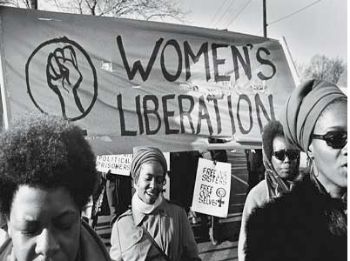
An essential point to understand is that every woman has endured a lot in this rather grotesque patriarchal capitalist world; that is the nature of what we as women have to live with. All voices are important as they come from different histories and experiences; we may not like what those voices are saying, they may seem more or less poignant, we may not be able to understand their oppression, but that does not mean it is any less.
There cannot be an hierarchy of oppression, as oppression weighs on all of us. Some women not only have the experience of oppression as a woman; there is the additional oppression of race, there is the additional exploitation of class, there are those that face oppression due to their sexual preferences in a patriarchal society, there are those that face social exclusion due to physical or mental impairment in a society in which ablism is predominant. These oppressions and exploitation combine in a manner than is more than simply summation: it is qualitative, creating a tapestry of oppression and exploitation which differs substantially from that of wealthy white women due to differing needs, experiences, and the impact of cultural and social history. A movement cannot be led from above by the privileged if it is to actually address the needs and interests of those facing multiple oppressions and exploitation. Quite simply, our needs differ, our histories differ, and our everyday lives and options differ. This must be a movement whose centre contains those who face multiple oppressions so that their interests, voices and needs are heard and are at the centre of the movement.
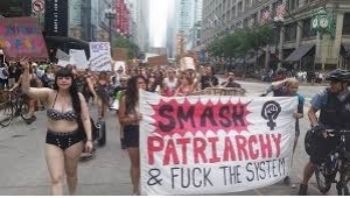
Addressing Oppression
“Women need to come together in situations where there will be ideological disagreement and work to change that interaction so communication occurs. This means that when women come together, rather than pretend union, we would acknowledge that we are divided and must develop strategies to overcome fears, prejudices, resentments, competitiveness, etc. […]
While no woman wants to enter a situation in which she will be psychologically annihilated, women can face one another in hostile confrontation and struggle and move beyond the hostility to understanding. Expression of hostility as an end in itself is a useless activity, but when it is the catalyst pushing us on to greater clarify and understanding, it serves a meaningful function.
Women need to have the experience of working through hostility to arrive at understanding and solidarity, if only to free ourselves from the sexist socialization that tells us to avoid confrontation because we will be victimized or destroyed. […] If women always seek to avoid confrontation, to always be “safe,” we may never experience any revolutionary change, any transformation, individually or collectively (Hooks, 2000, pp. 65-66).”
If the nature of women’s oppression is simply inequality in accessing political, social and economic rights in a specific context, simple reforms will be able to alter things for the better. Will that solve the problem of women’s oppression? That depends on what you believe the causes of women’s oppression are.

However, the issue of whether the problems that women experience derive from more than the inability to accessing political, social and economic equality but are conditioned by other things, such as race and class adds additional dimensions to the question. In order to understand this, we need to understand the role that racism plays in colonialism, imperialism or neo-colonialism and what role racism serves in this process and whose interests does racism serve.
In terms of class, clearly those whose role is solely to ensure the continuation of control over property have different wants and needs than those who also have to work in order to bring income into the home as well as to ensure the social reproduction of their class.
Women with physical and mental impairments face specific problems just accessing simple things that most of us take for granted (e.g., housing, transport), in addition they are invariably paid lower than any other group of women. They have the issue of living an independent and fulfilling life in the context of living in societies where those with impairments are deemed imperfect, unworthy, and literally second rate. Women with impairments have faced sterilisation abuse long after it has been effectively eliminated for their sisters that are not impaired physically and mentally.

If we go back to the first struggles around women’s suffrage, equal access to property, and equal rights (they still have not passed an equal rights amendment in the US btw), we can see differences among women from the beginning. An early struggle for women’s suffrage in Britain was led by working class women in the Chartist movement after it became rather clear that the 1832 Reform Act was not going to benefit the working classes. Women’s Chartist groups existed and advanced a call for universal suffrage. This was not accepted by most working class men of the time, of course; the argument of everything in its time and place is an old one and we always come in last.
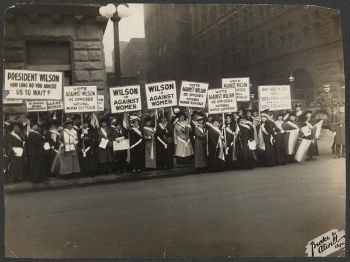
The struggle for women’s suffrage in the US split upper class white women from women of colour and led to a split in the liberal feminist movement; with some women arguing along class lines, saying that poor and uneducated men and black men had the right to vote before they did, they being women of education and property (see National Women’s Suffrage Association led by Elizabeth Cady Stanton and Susan B Anthony).
Instead of arguing for accessing the vote for all irrespective of education and property ownership (which was the position fought for others fighting for suffrage, see the American Women’s Suffrage Association led by Lucy Stone and Julia Ward Howe), they concentrated on their own needs. Many women activists of the hard left argued for supporting the extension of suffrage as part of the completion of bourgeois democratic processes; but they never believed that the vote in and of itself would create full equality for women in the context of capitalism (this was the case for Clara Zetkin, Alexandra Kollantai and Rosa Luxemburg) . Some women of the hard left, like Mother Jones, never supported the extension of suffrage as she didn’t believe that equality for the working class could be found in the ballot box.
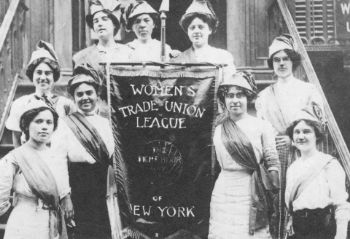
Moreover, when working class women struggled to form trade unions to fight for better wages and working conditions that did not apply to upper class women in the least; they did not have to work and if these struggles were successful they would threaten upper class women’s interests as their wealth, power and prestige was tied to their husbands; they wanted equality, not to lose access to that which gave them power. In The Social Basis of the Women’s Question, Alexandra Kollantai speaks of feminists in Russia trying to organise women servants and domestic labourers to help struggle for the extension of suffrage, who then saw these workers trying to get better working conditions and wages against their employers (their selves). So, while the issue of getting suffrage was important, there were things that were of immediate concerns to women workers which brought them into conflict with women from other classes.
Socialist feminism and social reproduction theory
From its beginnings, the struggle for women’s rights already faced significant differences as to how to understand women’s oppression and how to eliminate it. Could reforms in the context of the capitalist system eliminate women’s oppression or simply address inequality that does not threaten the system? Is women’s oppression due to the control of men over the societies in which we lived as it seems to exist over economic and political systems? Or does the ideology of male domination alter over time and change to fit the political and economic systems in which we live?
How can we eliminate this oppression if is there something more than simply that ideology that is responsible? If the nature of women’s oppression alters with different political and economic systems what can we do to eliminate it completely, do we need to eliminate that which underlies our oppression? The issue comes from where inequality derives, is it a left-over from older periods or is it part and parcel of societies based around class and hence property ownership? Certainly, as part of a democratic reform movement, the worst inequalities between men and women could be addressed, but would that eliminate women’s specific oppression?
I would argue no, women’s oppression requires more than simple reform; but I am a socialist feminist. For socialist feminists, women’s oppression is caused by the existence of property relations and that as long as private property (in the sense of private ownership of capital and land) exists, women would never be equal. However, the types of inequality that women face are not ones that all women bear equally and in the same way.
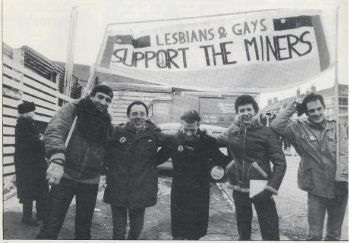
Moreover, depending on the nature of the societies in which we live, the way in which things are produced and distributed, it means that women’s oppression differs in different societies and that depends on how those societies and economic systems reproduce themselves.
For socialist feminists, women’s oppression under capitalism is two-fold. On the one hand, like all members of the working class, women are exploited under the capitalist economic system. They are exploited as what they receive as wages differs from the value of what they produce as workers. A portion of the goods and services they produce is taken by employers. On the other hand, women face an additional oppression and that relates to the process of social reproduction. Women not only produce the next generation of workers, they are also responsible for socialisation and raising their children, they are responsible for maintaining home and household and they are responsible for the care of the infirm and elderly members of the family that are unable to work in the labour market. Moreover, their labour in the home is unpaid; they do it with no recompense.
Throughout human history, in different societies, with the existence of private property, women’s roles in society were determined by their class. The role of women of the upper classes in physically producing the next generation of the ruling class was predominant; this also meant controlling their reproduction and limiting their unfettered access to the real world (think of foot-binding in China, purdah in Islamic areas, and the seclusion of royal women) to avoid children born on the wrong side of the sheet for example. Their wealth, inherited from their fathers (or their husband if they survived them) was part of dowries that added to the power and prestige of their husbands and not under their control. They may have controlled the running of the households they lived in, they may have even controlled spending, but political and economic power derived from the power of their husbands and families.
On the other hand, non-propertied women (the vast majority) worked and created the next generation of those to labour in the field, factories, etc. In the US south before the civil war, black female slaves worked the fields next to men; there was no gender segregation for field slaves. The labour of women was part of the labour of the extended family, we may have had different tasks, but it was not less essential (and it is still essential). In some countries, (not in all), peasant women worked the fields alongside their husbands. Moreover, they also produced subsistence goods for home consumption; they produced clothing, bedding, and food and also raised the children, and took care of the family and the elderly. Their labour was not seen as lesser or not important.
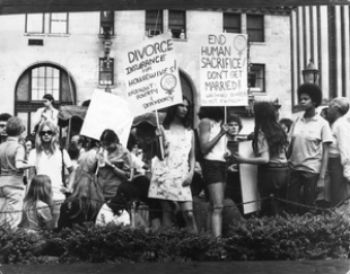
If you think about how an economic system reproduces itself; it is not only the capital goods as inputs that need to be replaced; it is the labour that is used in production which must also be reproduced as well. That labour itself needs to be physically reproduced, it needs to be fed, clothed, and have housing; it also needs to be educated, trained and able to participate in its role as workers when old enough to join the work force. In capitalism, if we consider the reproduction of labour; for the individual capitalist this may be seen as a cost to himself, but for the system as a whole, it is essential for ensuring the continuation of the system.

The fact that women do work in the labour market for wages (and they have always done so in the capitalist economic system), but are still overwhelmingly responsible for social reproduction at home has impacted women seriously and we can still see this today.
Why should capitalists pay for labour that is provided for free at home? Given the need for women’s labour for the capitalist system, it means that some provision for coverage of child care is needed. However, that was not seen as extremely profitable compared to other sectors and areas where profits could be had, e.g., in industry and manufacturing. So, since women’s labour was needed, coverage for the sick, coverage for the elderly (beyond pensions) and childcare began to be provided by the state. However, a generalised socialised form of this labour was never done; the state sector and the social welfare state never provided complete coverage and this means that women still face a two-fold exploitation and oppression.
Building Solidarity
“When women actively struggle in a truly supportive way to understand our differences, to change misguided, distorted perspectives, we lay the foundation for the experience of political solidarity. Solidarity is not the same as support. To experience solidarity, we must have a community of interests, shared beliefs, and goals around which to unite, to build Sisterhood. Support can be occasional. It can be given and just as easily withdrawn. Solidarity requires sustained, ongoing commitment. In feminist movement, there is need for diversity, disagreement, and difference if we are to grow. […]
Women do not need to eradicate difference to feel solidarity. We do not need to share common oppression to fight equally to end oppression. We do not need anti-male sentiments to bond us together, so great is the wealth of experience, culture and ideas we have to share with one another. We can be sisters united by shared interests and beliefs, united in our appreciation for diversity, united in our struggle to end sexist oppression, united in political solidarity (Bell Hooks, 2000, p. 67).”
I have argued that women’s oppression cannot be eliminated until we eliminate private property. But does that mean that we do not struggle now to address what inequalities we can? Certainly not!

But what do we need to do this? Just because we have not faced racism, does that mean we cannot offer solidarity to those that suffer from it? Just because our children are not being murdered by an occupying military (domestic or external), does that mean that we cannot offer solidarity to those whose children are being murdered and that are suffering? Just because your children have food in their bellies and nice clothes, does that mean that you cannot offer solidarity to those women whose children do not? Solidarity is more than support; it is horizontal, not vertical and is based upon recognition of difference and respect.

Some of our oppression, specifically economic, political and social inequality, must certainly be addressed now. We also must struggle against the patriarchal ideology that dominates our lives and keeps us constrained, oppressed, objectified, unequal and dependent. Basic human rights, such as control over our reproduction and our bodies must certainly be addressed now and this has to benefit all women, irrespective of their ability to pay, and thus safely access health care and medicine for free. We cannot wait for the revolution for women to have control over their reproduction. We cannot wait for the revolution for women for assistance in social reproduction responsibilities to allow for a deeper and more fulfilling life, we cannot wait for the revolution to actually earn the same pay for the same job or a job which is comparable. We cannot wait for the revolution to worry about where our children are whilst we are working and whether their lives are in danger or what they will come to in a racist society.
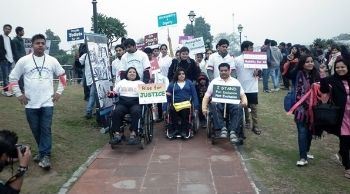
Moreover, if we do wait for the revolution (out of fears of splitting the class, yes, I swear that some members of the left argue this), there will not have been a challenge to patriarchy and that means that people raised and steeped in a patriarchal culture where women’s oppression is part and parcel of the situation and have not challenged it, will now be creating the future which we all have fought so hard. Maybe it is me, but we cannot be so naïve to think that suddenly people indoctrinated in a patriarchal culture will just simply be able to step out of it. We need to stand together and fight (with our male allies), educate ourselves and each other.
That means that we need to find a way to actually work together, recognising our differences and listening and actually taking on board those different histories and experiences that we have and try to find a commonality of oppression that we share. On those things which we can unite, we must unite as we are facing an attack of such proportions that everything we have fought for and won, can be eroded. From this we can actually build a better future for all.

References:
Bell Hooks (2000) Feminist Theory: from Margin to Center, second edition, Pluto Press: London
Alexandra Kollantai (1909) The Social Basis of the Women’s Question, in Alexandra Kollantai, Selected Writings (1977), W. W. Norton and Company: NY
By the way, go see Pride … I included an original picture of Lesbians and Gays Support the Miners in the piece. By all accounts, it will make you laugh and cry and feel wonderful at the same time.

Recent Comments